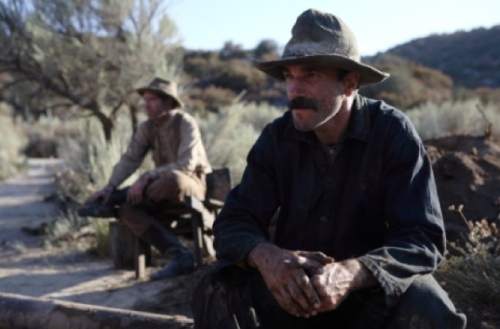As a big cinema fan, I’ve enjoyed the work of writer/director Paul Thomas Anderson since he first exploded on the scene with Boogie Nights in 1997.
I loved his three hour follow up, 1999’s Magnolia, and the more I watch There Will Be Blood, the more I dig it. Whether you like his work or not, the guy definitely knows how to make a picture, and I feel his next film, The Master, will be a fine follow up to Blood.

The Master is a drama based on the creation of Scientology, with Phillip Seymour Hoffman playing a character who’s obviously based on L. Ron Hubbard.
The religion he creates isn’t directly called Scientology, it goes under the name The Cause, but if you have three working brain cells, you’ll be able to tell it’s really Scientology.
Now a report has hit Movieline that The Master may be in theaters by Fall. Megan Ellison, a financer on the film, tweeted that “it’s still a bit early, but I’d keep my eyes on October.”
In recent years, Anderson’s been very secretive about his work, perhaps following in the footsteps of his idol Stanely Kubrick, who almost never did press and let his movies speak for themselves. Again, having read the script, it should make a terrific follow up to There Will Be Blood, and if you’re a PTA fan, you shouldn’t be disappointed.
Another interesting development with The Master is in a day and age when everyone’s going to digital video, Anderson’s shooting the film in 65mm, and funny enough, Andrew Stanton, the director of John Carter, confirmed that PTA was working in the format via Twitter.
As Collider reports, Stanton and his Pixar alumni, Brad Bird (The Incredibles, The Iron Giant), and Lee Unkrich (Toy Story 3), were tweeting about showing movies in 70 and 65mm, and as Stanton reported, “The Master is indeed in 65. They nearly lost a camera shooting in the Bay.” (Remember, L. Ron Hubbard spent a lot of time preaching the word of Scientology on boats, and part of the organization is The Sea Orgs).
As Collider further mentions, “If you’re unfamiliar with the technical aspects of 65mm film, you’ve no doubt witnessed its clarity. 65mm film is actually projected at 70mm, which is the format used by IMAX screens. Needless to say, the fact that Anderson shot in 65mm is great news to film fanatics.”






